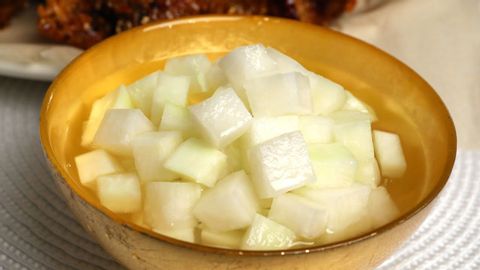
Subtitles & vocabulary
Chicken-mu (Pickled radish: 치킨무)
00
林宜悉 posted on 2020/03/25Save
Video vocabulary
gorgeous
US /ˈɡɔrdʒəs/
・
UK /'ɡɔ:dʒəs/
- Adjective
- Extremely attractive; richly beautiful
- Delightfully enjoyable or pleasant.
B1
More texture
US /ˈtɛkstʃɚ/
・
UK /ˈtekstʃə(r)/
- Noun (Countable/Uncountable)
- Quality from different elements, as in music
- Look and feel of a substance or material
- Transitive Verb
- To give a particular look or feel to a surface
B1
More recipe
US /ˈrɛsəˌpi/
・
UK /'resəpɪ/
- Noun
- Conditions likely to create a particular result
- Directions for making a dish, with the ingredients
B1
More firm
US /fɚm/
・
UK /fɜ:m/
- Countable Noun
- Company that sells goods or services
- Adjective
- Fairly hard or solid, not soft
- Unchanging and strong
A2TOEIC
More Use Energy
Unlock All Vocabulary
Unlock pronunciation, explanations, and filters
